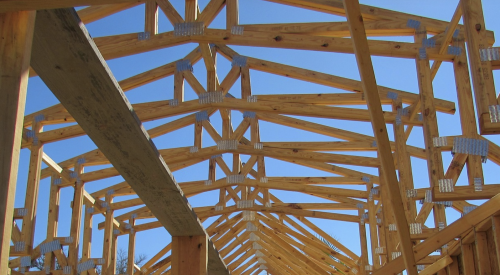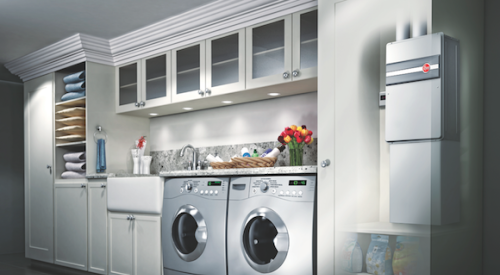Last month I explained why 2015 presents a “perfect storm” for home builders. David Crowe, chief economist for the NAHB, predicts 16 percent growth in new residential construction this year and more than 35 percent for 2016. That should be cause for celebration, yet significant increases in every cost category, from land to sales and marketing, from construction hard costs to overhead, pose real obstacles.
In normal markets, high demand drives increased sales prices for new homes, but things are different this year. Even in the face of impressive structural demand, research from Burns, Meyers, the WSJ, et al., suggests that builders can’t raise sales prices enough to fully cover their increasing costs because they are overpriced in all market segments. The gap between the price of new homes and that of existing for-sale homes has widened to unprecedented levels, exerting a strong downward force on price increases for comparative units. There will be some increases, but more in some markets than others and not enough in virtually all. The result: 95 percent of all U.S. builders will grow this year, but with lower profit margins—unless they undertake fundamental change.
Most builders are thus desperate to find another 3 percent to 5 percent margin. And one thing’s for certain, trying to pound it out of suppliers and trades won’t work because, in this market, they’ll just move on to a competitor.
But what if I told you there was five to 10 times that amount of margin available, if you know where to look and resolve to find it and do what it takes to book it? Would you at least try?
Doing Things Differently
Over the past eight years my colleagues and I have shepherded home builders through more than 150 Lean process implementations where cross-functional teams voluntarily subject themselves to days on end listening to suppliers and trades describe what now totals more than 25,000 specific improvement ideas in a detailed, highly structured format.
The savings identified almost always exceed $10K per unit by week’s end, without asking for a single price concession. After hearing from nearly 5,000 supplier and trade companies, voluminous data reveals the one-offs versus the continuing patterns of waste. Through that process, we began to see six general “buckets” into which the improvements and resultant savings fit.
At times there’s considerable overlap, as the same opportunity—drywall is a great example—may be caused by labor issues, inefficient design, or sub-optimized buying practices if not a combination of all three. So it’s common for one idea to affect two or three buckets, and it’s not unusual to see an impact on four or five.
The stunning, inarguable conclusion is a very conservative finding of waste exceeding 20 percent of sales price in the $300,000 median-price U.S. home. That’s $60,000 per unit—a seemingly astronomical number.
Can it be true? For whatever reasons, home building hasn’t been subject to the same level of scrutiny as other industries over the years for the application of lean principles and effort to reduce waste in product and process.
What is important to know is that every other industry that has been thoroughly measured, such as automotive, reveals 40 percent or even more in waste. Ever tour an auto plant? Ever seen how they build multiple models now on the same assembly line with almost no inventory? Ever watch as there is almost no wasted motion and virtually zero rework? Ever marvel at the luxury of having the same people come to work at the same location on the same product, day after day? Now ask yourself: Which industry is inherently more wasteful as currently practiced, home building or automotive?
I rest my case.
Twenty percent is just getting started, so let’s have a look.
The Buckets
The $10,000 value on each bucket comes from the data we have accumulated to support that amount as a minimum, although for some builders the potential is much greater.
We have found, for example, that for each dollar you find in product, you find at least two in process. Each builder will gravitate to some categories more than others, and thus the distributions vary widely.
Where they focus is not always where the most dollars are, but where the builder is more adept or at least comfortable looking. Everyone goes after No. 2, product, because it’s the easiest. You can see it, feel it, take pictures of the waste. Process, which is No. 3, on the other hand—or the “black art” of land development—and No. 1, are much more difficult to get your arms around. Cycle time, No. 4, often remains untouched because most builders don’t fully understand the remarkable impact of absorption on fixed cost. And as far as supplier/trade costs go, almost everyone is afraid to touch No.’s 5 and 6, although we do see progress.
 Bucket 1: $10K, Land and Lot
Bucket 1: $10K, Land and Lot
At the end of a project, if house cost variance exceeds $500, a builder will convene a court of inquiry to discover the source. Yet if finished-lot cost exceeds $5K over the original budget, the reaction is, “Gee, land sure is expensive here,” and then you move on to the next agenda item. It’s natural to focus most heavily on that which you can control, and two of the three components of finished-lot cost seem largely beyond our influence: the price of raw land, and entitlements.
But the substantial remaining piece, land development, can push up the cost of a lot $10K in a heartbeat. Dirt balance to make the lots work often reveals costs that can be greatly reduced by deciding exactly what you’re going to build prior to mass grading and undergrounds, and then sticking with it.
Similarly, putting genuine thought into how you lay out utilities can be huge. It’s always a bonus, for example, to keep trenches out from under driveways but if unavoidable, paying particular attention to depth, bedding, and backfill can save tens of thousands in warranty cost. Sweating the details here can create a significant bottom-line impact.
 Bucket 2: $10K, Product—including design, plans, and specifications
Bucket 2: $10K, Product—including design, plans, and specifications
Despite the success at picking off the low-hanging fruit in this category during the recent industry crash, we are still amazed at what is found in each session. There are many sources to examine here, with incredible waste in concrete, mechanicals, finishes, and every other cost category, but the most egregious waste we see virtually everywhere is in wood and engineered wood products (EWP) truss and panels. It is a rare house where we can’t quickly spot $1,000 in waste, and $3,000 is common.
Each builder has to meet two codes: the building code and the “customer code.” Meet the building code for the second-floor master and each time the customer crosses it she feels it bounce … and you’ve lost. Beyond those two codes, however, all is waste.
I continually hear instances of overbuilding dismissed with comments like, “That must be a shear requirement, or wind-load.” Well, is it really? More often than not, it’s still overbuilt. With some notable exceptions, most architects don’t concern themselves with those details, and most engineers over-spec them, sometimes grossly so. Some builders simply let the lumber/EWP/truss suppliers do the takeoffs and layouts and we find most all of these over-spec’d as well.
The answer is to find yourself a truly good engineer; one who will save you his or her fee multiple times over on each house you build by thoroughly dialing in exactly what is required—and what is not—for each plan.
If you buy finished lots, the tack is to proactively work upstream with your developers to ensure that they understand your requirements to build most efficiently.
 Bucket 3: $10K, Process—including overhead, sales, and marketing
Bucket 3: $10K, Process—including overhead, sales, and marketing
Process is truly the Holy Grail in home building and we could rightfully lump No.’s 4 and 5 below under the same heading. It is deserving of an article unto itself.
There are myriad home building processes to consider, but at the core is what’s usually called the “start package.” With the start package in hand and feedback from suppliers and trades about its accuracy, you can predict most everything else about how well things go for any builder. When I began with the Chicago division of a national builder in the 1980s, its start package was called “The Bible,” which indicates the degree of reverence with which it was treated. Field superintendents, project managers, suppliers, and trades alike considered it gospel. It was that good, that accurate, and completely dependable.
To get there, though, a ton of other things had to be done right. Options and selections were 100 percent nailed down and salespeople were trained to sell what the company offered and to keep customers happy doing so while meeting all cut-off dates. Late change orders were virtually nonexistent, as were VPOs.
Further upstream, management had decided early on exactly what the company was building and stuck with it; early enough that purchasing could get the bids, contracts, and scopes all nailed down—up front. The result was that things ran beautifully.
Imagine my shock when I discovered that only a few other divisions in that company met the Chicago division’s standards of accuracy and completeness. In the 26 years since, I’ve found that the vast majority of builders can’t meet that standard, to their loss. The difference that operational excellence in just this one process makes—in how well both the home builder and the 35 to 50 suppliers and trades that build the house operate—can’t be understated. Any small amount of neglect here translates to big dollars.
 Bucket 4: $10K, Cycle Time
Bucket 4: $10K, Cycle Time
I’ve written about cycle time for years, perhaps ad nauseam, yet most builders still fail to recognize the impact. The dollar sway per house per day as calculated by our “Saved Day Calculator” Excel template is typically four to seven times the amount that most builders will initially estimate. (Email me to receive a free copy of the template for your internal use.)
The key is increased absorption of fixed costs over a greater number of units in a set time period, while requiring less time to build. Coming out of the downturn, however, the current trade shortage—combined with looming shortages of materials—has expanded cycle times, which is exactly the opposite of what we need.
We’ve also found virtually no correlation between cycle time and quality as far as the commonly held belief that quality requires more time. If anything, the opposite is true.
Without knowing a builder’s current cycle time and cost structure including fixed and variable percentages, it’s tough to determine a rule of thumb here, but start with $500 per house per day saved. So if you build 50 units and you save five schedule days, that’s a potential of 50 units at $2,500 per unit or $125K gross margin. Got your attention? That’s assuming you use those saved days to build more units and sell them, but that’s the goal. For builders who crack this code, everything gets better.
 Bucket 5: $10K, Supplier/Trade—wasted or unnecessary trips
Bucket 5: $10K, Supplier/Trade—wasted or unnecessary trips
This too is not new for readers of this column. Yet once again, it remains largely untouched. I frequently pose a series of questions to groups of suppliers and trades all across the country. First I ask how many trips they make beyond what should be necessary to complete their work for each house, if everything had been 100% right from plans and specifications to bid packages and start packages. It’s always one or two for each of them, and many, such as painters and lumber companies, report an additional three, four, five, or even more added trips. Then we talk about what these trips cost.
I ask what would happen to their bottom line if they could eliminate just half of those trips. From our database, we know that very conservatively, the average U.S. home carries a buried cost factor of a minimum of 50 extra trips costing $200 each that should not have to be made. That’s a $10K bill buried under every house in America.
My final question to trades and suppliers, however, is really directed at the builders in the room. “How many of you,” I ask, “have ever had a builder ask to sit down with you for the express purpose of reducing or eliminating those extra trips and saving you money?” I virtually never see a hand raised. It’s in their overhead, so it’s in their cost structure, so yes, you the builder are paying, but no one does much about it. And you say that you are really interested in cost reduction? If you eliminated those trips, how much more real work could those suppliers and trades do for you? And might they look differently at you during the bidding process?
 Bucket 6: $10K, Supplier/Trade Overhead
Bucket 6: $10K, Supplier/Trade Overhead
This bucket remains almost entirely untouched in home building, but is standard operating procedure now in most other industries. Car manufacturers routinely spend time upstream in their suppliers’ facilities helping them identify and eliminate waste and cost, knowing that in the process they are helping themselves.
I like to ask high-inventory suppliers such as lumber and cabinet companies to think for a moment of the best builder in terms of schedule, planning, and efficiency that they’ve ever supplied; the builder who always gives them sufficient time to order whatever’s needed for each house. Then I ask them to imagine if all builders were that good; what then would be the percentage of inventory they could eliminate? Cabinet companies often say 90 or 100 percent, while the average for lumber dealers is around 50 percent.
Most research says that inventory costs, all-in, average at least 30 percent of the material value annually. That’s a massive amount of money that builders could help suppliers save—and inventory is just one item on a list of areas where builders can help. As with wasted trips, if we were to go about the business of sincerely trying to help our suppliers and trades reduce their cost in any way we can, do you think it might have an impact on how they bid us next time? Count on it!
Even this brief overview makes it clear that claiming an average of just $10K in each of the six buckets is not just believable but is genuine low-ball accounting. In 2015, The Year of Building Dangerously, we’re seeing a level of demand we have only dreamed of since the downturn. That demand won’t be met by raising prices. In fact, if anything, you should be trying to lower your prices.
One of our builders who normally sells an average of 35 monthly did just that for February, a short month, and sold 72 units by offering what he termed “crazy discounts.” That proves the demand is there. Yet he knows he can’t keep pricing that way … unless … he finds a way to build more efficiently. That’s his challenge. That is your challenge: 2015 could still be good and 2016 even better, but you’d better get started. Step one is to change the way you think.













